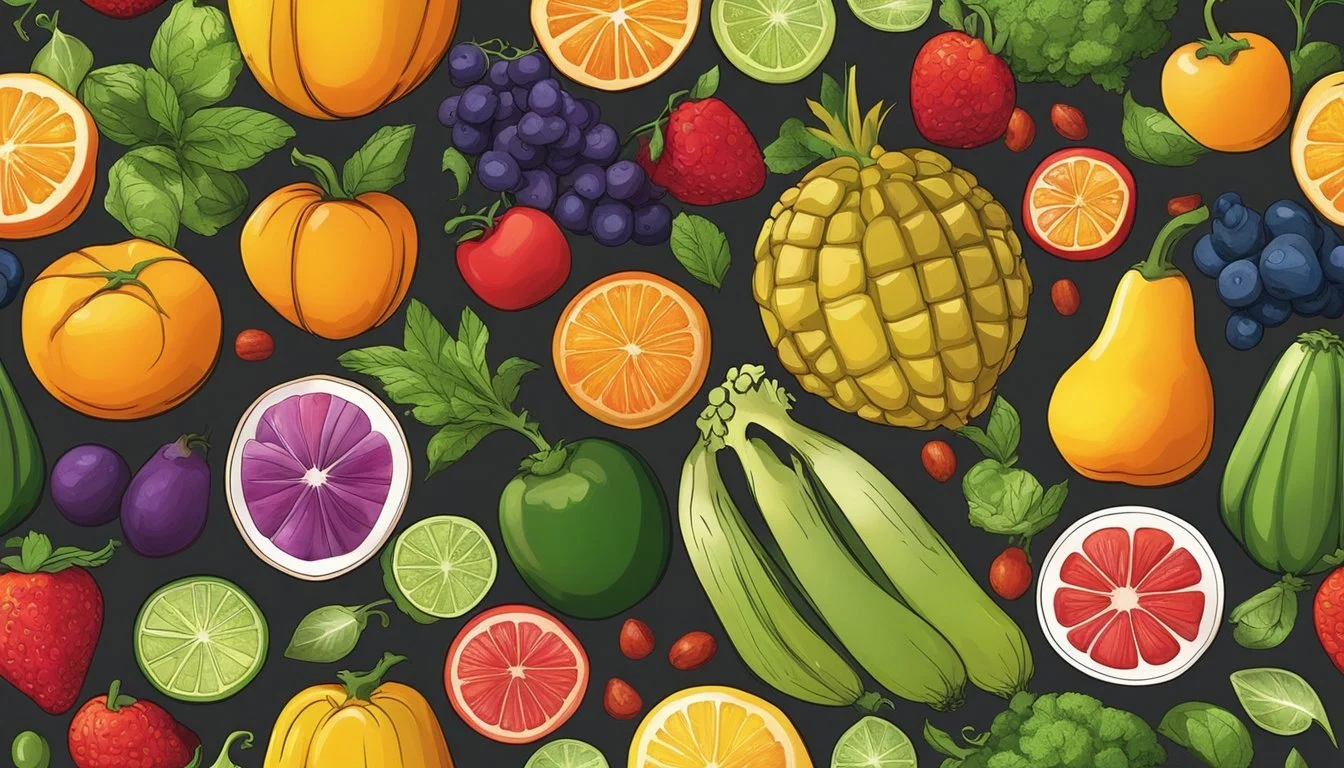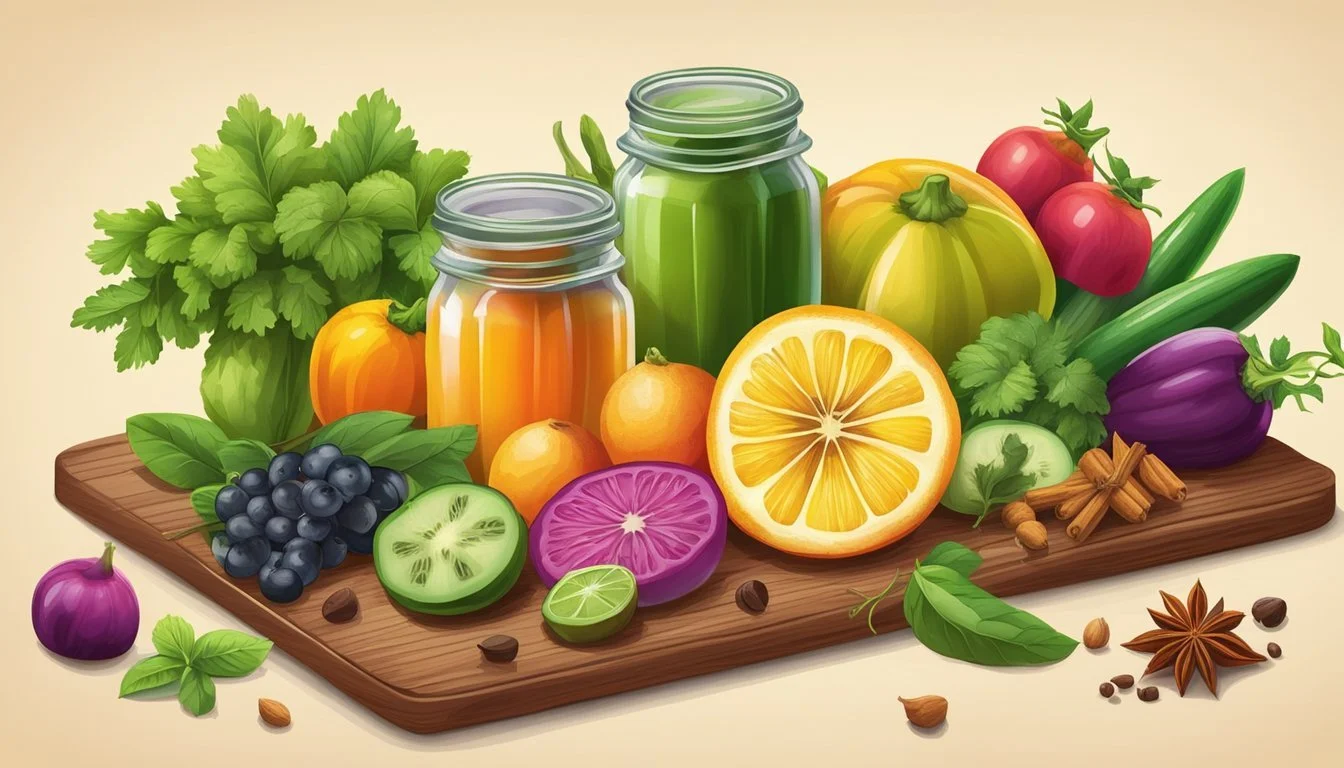Swicy in the Raw
Unveiling the Fusion of Sweet and Spicy in Raw Food Trends
Swicy, a portmanteau of "sweet" and "spicy," is an emerging food trend characterizing a harmonious blend of flavors that simultaneously cater to a love for sugary treats and a passion for heat. This culinary concept has recently gained traction, with a notable 38% increase in menu appearances over the past year. It challenges the traditional boundaries of raw food cuisine, which is often associated with natural simplicity and uncooked purity. By infusing raw dishes with swicy elements, chefs are transforming the raw food scene into an adventurous sensory experience.
In raw food cuisine, the incorporation of swicy flavors presents an innovative approach to enlivening dishes without the use of heat-based cooking methods. Sweet and spicy ingredients, when thoughtfully combined, can enhance natural flavors and add an unexpected depth to the raw food palate. Taste buds are greeted with the initial sweetness which then gradually gives way to a spicy undertone, resulting in a dynamic and satisfying taste profile.
The science behind this excitement in the raw food realm lies in the balance that swicy components provide. Spicy foods, (What wine goes well with spicy food?) known to trigger the release of endorphins, form a feel-good synergy with the cooling effect of sweet elements. This trend not only reinvents the sensory experience for raw food enthusiasts but also caters to a wider audience seeking the thrill of flavor exploration in its most unadulterated form.
The Evolution of Swicy
The term "swicy" has transitioned from a novel terminology to a culinary mainstay, reflecting a blend of sweet and spicy flavors that tease the palate with contrasting sensations.
Historical Roots
The concept of combining sweet and spicy is far from new, with historical precedents in many global cuisines. The balance of sugar with heat creates what is now known as "sweet heat," ticking the boxes for taste complexity and sensory pleasure. Innovations in various cultures have laid the groundwork for the swicy trend, with traditional dishes often showcasing a harmony of sweet honey with fiery chilies.
Rise with Millennials and Gen Z
Data from market research firm Datassential shows that millennials and Gen Z have propelled the popularity of swicy flavors, with their penchant for bold and instagrammable food experiences. This demographic values both innovation and tradition, manifesting in their embrace of swicy flavors. They have played a key role in evolving swicy from a niche interest into a defining feature of contemporary cuisine.
Swicy Enters the Mainstream
As swicy flavors infiltrate the mainstream, brands are quick to respond. Menus have seen a 38% increase in swicy options year-over-year, an explicit indication of its burgeoning popularity. Datassential also projects that hot honey, a classic swicy condiment, is on track to outperform a broad range of other culinary flavors, marking its definitive entry into the mainstream palate. This acceptance speaks to the broader culinary movement towards flavor profiles that span multiple taste spectra, offering diners composite experiences.
Swicy Ingredients
Swicy, a portmanteau of “sweet” and “spicy,” represents a flavor category gaining momentum in raw food cuisine. This section delves into the key condiments and pairings that embody the swicy taste, as well as how different flavors balance to create harmony in raw dishes.
Key Condiments
Hot honey and gochujang stand as two fundamental condiments in swicy recipes. Hot honey, a fusion of honey’s natural sweetness with a kick of chili, lends a viscous and bold flavor to raw dishes. Gochujang, a Korean staple, brings a complex mix of sweet, spicy, and umami tones due to its fermented soybean base.
Tajín seasoning, a blend of chili peppers, lime, and salt, introduces a citrusy twist that complements the sweetness of fruit like pineapple, commonly found in raw salsas.
Fish sauce and soy sauce, though traditionally salty and umami, can blend with sweeteners like sugar to create a nuanced swicy taste.
Raw seeds such as mustard and fennel seeds contribute a spicy kick balanced with their innate earthy sweetness.
Iconic Swicy Pairings
Pineapple and jalapeño provide a classic sweet-heat duo, embodying the essence of swicy with the fruit's robust sweetness and the pepper’s sharp spiciness.
The marriage of mango and habanero offers a tropical sweetness that gracefully counters the pepper's intense heat.
Strawberries infused with lemongrass and ginger showcase how the sweetness of berries pairs well with the subtle hot notes of spices.
Balancing Flavors
The art of swicy flavor balancing is critical and centers around counteracting the heat while highlighting sweetness. For instance:
Sugar can neutralize the scorching aspect of habanero peppers, softening the overall impact on the palate.
Raw onion and garlic, when paired with sweet elements like agave syrup or fruit salsas, can achieve a complex swicy profile desirable in raw food cuisines.
Historically, cultures such as the Aztecs with their xocoatl, a spicy chocolate drink, understood the appeal of sweet and spicy. This tradition persists in Mexican cuisines, which often combine chocolate with heat, as well as in Vietnamese and Indian dishes where the interplay between ingredients like tamarind (sour), sugar (sweet), and chili (spicy) is foundational.
Swicy in Culinary Practices
The infusion of sweet and spicy flavors, termed 'Swicy', has revolutionized culinary practices across the professional and home cooking landscapes, gaining global recognition with dishes that tantalize the palate through a complex flavor profile.
Professional Kitchen Innovations
Chefs are leading the Swicy trend, innovating in professional kitchens with combinations like spicy grilled wings glazed with a sweet and spicy sauce, a staple now often seen in mainstream restaurants such as Buffalo Wild Wings. The sweet-spicy synergy is also prominent in cocktails, with drinks like jalapeño margaritas and mangonadas offering a swicy twist to traditional flavors. High-profile chains, including Pizza Hut, are aligning with the trend by incorporating sweet and spicy pairings on pizza with toppings like Thai chili sauce.
Outback Steakhouse: Featuring items like Spicy Grilled Shrimp on a bed of mango salsa.
Chick-fil-A: The Spicy Chicken Sandwich gets a swicy counterpart through limited-time honey glazes.
Home Cooking with Swicy
In home kitchens, enthusiasts are eagerly experimenting with swicy flavors. Roasted veggies drizzled with hot honey and fried chicken served with waffles and spicy maple syrup are simple yet popular swicy preparations. The art of pickling has also seen a swicy transformation, with jalapeños and other spiced fruits (What wine goes well with fruits?) adding a zesty layer to dishes.
Grilled Goods: Homemade swicy sauces becoming a favorite for barbecued items.
Desserts: Incorporation of swicy elements in pastries and ice creams for that kick of spice.
Global Swicy Dishes
Swicy flavors are not just a Western phenomenon but also a staple in many global cuisines. The Caribbean's jerk seasoning combines fiery chilies with sweet elements like brown sugar to create a distinctive taste. North African tagine intertwines sweet fruits with robust spices, offering a swicy palette in each bite. Asian cuisines, known for intricate flavors, feature dishes like stir-fry with a blend of sweet hoisin and spicy Szechuan sauce.
Thai: Favoring sweet and spicy pairings in both food and sauces.
Mexican: Celebrated in beverages and salsas that frame the swicy experience.
The fusion of sweet and spicy ingredients not only brings a novel gastronomical experience but also represents a cultural crossover, where the boldness of spices meets the comfort of sweetness in harmonious culinary creations.
Impact on Food Industry
The advent of 'swicy' – a portmanteau of sweet and spicy – flavors has brought a dynamic shift in how the food industry caters to the evolving palate. Particularly focused on raw food cuisine, this trend is becoming increasingly evident across various market segments, influencing product development, food service offerings, and consumer buying habits.
Popular Swicy Products
Swicy products have rapidly gained popularity, offering a bold flavor profile that appeals to a wide demographic. Brands like Takis and Doritos have successfully infused this taste sensation into their snack lines. Additionally, hot pepper jelly and spicy jam have become staples in the raw food scene, easily incorporated into cheese boards and charcuterie (What wine goes well with charcuterie?) for a swicy kick. In beverages, companies such as Torani and Monin are innovating with syrups that blend sweet with heat, expanding the swicy concept beyond solid foods.
Snack Innovations:
Takis and Doritos enhance snack experiences with swicy flavors.
Hot pepper jelly and spicy jam invigorate traditional charcuterie items.
Beverage Syrups:
Torani and Monin offer an array of swicy syrup options for diverse drink creations.
Food Service Adaptations
With swicy's surge, food service providers are adapting menus to include these flavors. Mexican cuisine has been at the forefront, with dishes like mangonada – a layered fruit and chili treat – and sauces like chamoy that blend sweet fruits with chili spices. These ingredients create a unique dining experience that attracts adventurous eaters, including Millennials and Gen Z, who favor bold and interactive meals.
Menu Integration:
Incorporation of swicy ingredients in Mexican cuisines like the mangonada.
Menu items featuring chamoy and red pepper flakes for a swicy spin.
Retail and Consumer Preferences
Market research firms like Datassential and Mintel have tracked an uptick in swicy-flavored product releases in grocery stores, indicating a strong consumer preference for this flavor combination. Raw food enthusiasts are not excluded from this trend, as they seek out swicy elements like pepperoni and red pepper flakes that can be integrated into raw food recipes. This preference has led brands and retailers to expand their offerings to meet the demand.
Consumer Trends:
Millennials and Gen Z display a strong preference for swicy flavors.
Grocery stores are diversifying their stock with more swicy options to reflect this trend.
Brands Responding:
An increase in swicy products from various brands to cater to consumer appetites.
Storage and Preservation
In the realm of raw food cuisine, particularly with the advent of 'swicy' flavors, storage and preservation are pivotal to maintaining the integrity of sweet and spicy elements. Careful consideration must be given to techniques that extend shelf life without compromising the freshness that is characteristic of raw food.
Extending Shelf Life
Refrigeration: Certain raw food ingredients infused with 'swicy' flavors benefit from being refrigerated to slow down spoilage. For example, a raw mango salsa with a 'swicy' profile can be kept fresh for longer when refrigerated at 4°C (39°F).
Freezing: Freezing can be employed for long-term storage while retaining the vibrant flavors of raw 'swicy' dishes. Ingredients like raw jaggery, incorporated in sweet-spicy sauces, can be frozen to prevent crystallization and flavor loss.
Best Practices for Freshness
Innovative Packaging: Utilizing vacuum-sealed containers can significantly reduce air exposure, which is crucial in keeping raw 'swicy' dishes fresh.
Immediate Consumption: For dishes like 'swicy' paratha that incorporate raw elements, it's best to consume them immediately after preparation to enjoy the peak flavors.
Pickling: As a method of preservation, pickling is an innovation in raw 'swicy' cuisine. Pickled 'swicy' vegetables do not only extend shelf life but can enhance the depth of flavors over time, merging the tang of pickling with the underlying sweet and spicy notes.
Swicy Culture and Society
The rise of swicy flavors has increasingly influenced cultural trends in culinary arts and societal health habits. Media presence and scientific perspective both advocate for the unique balance this sweet-spicy blend offers, noting both its sensory satisfaction and potential health benefits.
Media and Social Influence
The term "swicy," representing a fusion of sweet and spicy flavors, has surged in popularity due in part to its vibrant representation in media. The New York Times has spotlighted the trend, acknowledging the growing consumer demand for dishes that deliver a sweet heat. Such exposure in respected publications reinforces the swicy trend as a mainstream culinary movement. On social platforms, swicy dishes often go viral, as individuals share their exhilarating sensory experiences, further pushing its prominence within modern food culture.
Taste Buds Activation:
Sweet: Sugar activates
Spicy: Capsicum triggers
Health Perspectives
Swicy food’s effect on health is a subject of interest among nutritionists and food enthusiasts alike. The pleasurable aspect—where sweet flavors can temper the fiery zing of spices like capsaicin from capsicum—is more than just taste bud theater. Such combinations may encourage the release of endorphins, suggesting a pleasure-oriented aspect to swicy foods. Additionally, moderate consumption of the spicy components within swicy cuisine could potentially offer metabolic advantages. However, the conversation remains nuanced as these health impacts vary greatly among individuals.
Potential Benefits:
Pleasure: Endorphins release
Metabolism: Limited evidence suggests spices may boost







